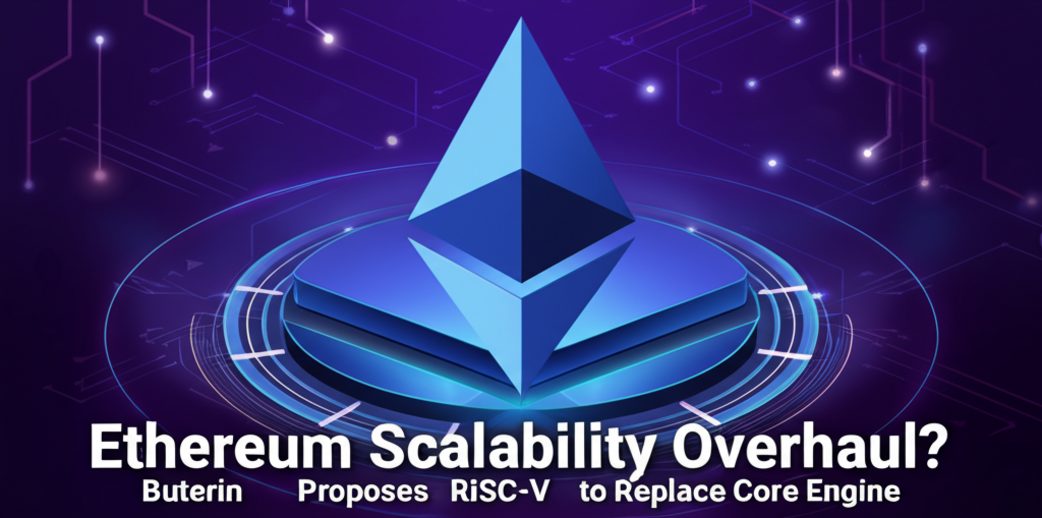Ethereum Scalability Overhaul? Buterin Proposes RISC-V to Replace Core Engine

Ethereum’s co-founder, Vitalik Buterin, has put forward a significant technical proposal suggesting a replacement of the Ethereum Virtual Machine (EVM) with RISC-V, an open-source instruction set architecture. This move could fundamentally reshape the foundation for Ethereum smart contracts and address key Ethereum scalability challenges.
In a recent technical outline, Buterin detailed how transitioning to RISC-V could substantially enhance the performance and streamline the complexity of Ethereum’s execution layer. The EVM, currently responsible for processing smart contract code across the vast crypto network, has been identified as a potential long-term hindrance to scaling efforts.
Buterin posits that adopting RISC-V, a standard already utilized within zero-knowledge EVM implementations, offers a pathway to major efficiency gains. This is particularly relevant for zero-knowledge (ZK) proof generation, a critical component of many blockchain scaling solutions.
Currently, ZK-EVMs often translate Ethereum operations into a RISC-V compatible format before generating proofs. Buterin’s concept involves developers compiling smart contracts directly to RISC-V, eliminating this intermediate translation step. He assured that popular Ethereum languages like Solidity and Vyper would remain viable, simply targeting the new RISC-V architecture instead of the EVM.
Crucially, this proposed shift would not alter Ethereum’s existing inter-contract communication protocols, smart contract abstractions, or account structures. The primary change focuses on the back-end computation process. Importantly, backward compatibility is a key consideration, ensuring that legacy EVM contracts can continue to function and interact seamlessly with new RISC-V based contracts.
According to the proposal’s estimates, this architectural modification could boost prover efficiency by more than 50 times, potentially positioning Ethereum more competitively against high-throughput monolithic blockchains like Solana and Sui. This architectural evolution could be vital for maintaining Ethereum’s leading position in the DeFi and smart contract space.
This forward-looking proposal emerges amidst a period of multi-year lows in Ethereum’s mainnet usage. Network data indicates average transaction fees fell significantly in April, reaching levels ($0.16) not seen since 2020. This trend is partly attributed to declining Layer 1 activity as users increasingly migrate to Layer 2 networks seeking lower transaction costs. While previous network updates successfully lowered L2 data costs, they have also impacted Layer 1 fee revenue.
Although Ethereum’s Pectra upgrade is anticipated around early May, Buterin’s call for such a fundamental change underscores the view that incremental updates might be insufficient for long-term goals. To truly enhance scalability and compete effectively with newer, high-performance blockchain technologies, Ethereum may need to reconsider core aspects of its smart contract execution environment.
